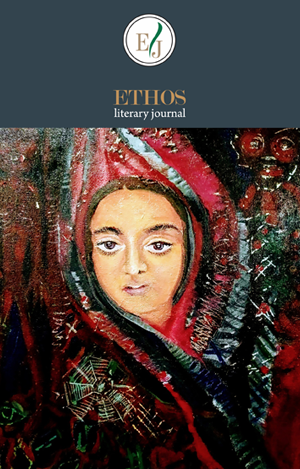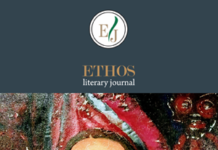A Unique Blend of the Familiar with the Experimental
When you undress a poem with dignity,
delicately like a lover, it will disrobe you
of excess, accessing your inner feelings
(“Conduction”)
In the fifty-one poems included in his much-acclaimed third collection of poetry titled This Summer and That Summer (Bloomsbury 2015), Sanjeev Sethi manages to achieve precisely this very dignity that enables the transcendence of his poetry to unchartered highs. The crisp precision of his form discards any possibility of excesses, birthing verses that surprise the readers with curious enjambments, unexpected alliterations and assonants, and a vast array of conventional and unconventional themes.
Drawing from his personal experiences, the inner turmoil, conflict, and grief that Sethi writes of are handled with a rare, controlled artistry. The controlled sentimentality in “Nocturnal Activity,” for instance, wherein the poet expresses regret over a disturbed past, is par excellence.
For insects, various repellents
are available.
But is there a pesticide
for the past?
In spite of some intensely personal verses, the collection is free from over-sentimentality and over-emotionalism. Again, in “Sunny Chacha” he writes,
You were gentle. “Beta, don’t worry. You are the son
I have never had. We are a family.”
Perhaps, saying it more to yourself than me.
I’m not used to families,” I cried.
This handling of pain with such sustained dignity is proof of his excellent penmanship. The self-awareness of the poet is almost palpable to the readers as they are made to view the sanctum sanatorium of his mind through his own refined emotional lenses.
 Language and Identity in the poems of Sanjeev Sethi
Language and Identity in the poems of Sanjeev Sethi
Sethi’s poems are sprawled across an often claustrophobic, often liberating urban canvas. Quite literally too, in his world: “there is no valley,/ no rivulet nearby, and hence, it is a high-rise here/ and a high rise there” (“Metropolis”). In “Garrison Report” he describes the geography of the ‘living quarters’ as follows:
In the calmness of cantonments living
quarters sprawled like the thighs
of a diva on a double spread.
He further writes,
There was a barrack here, a bunglow there, cluster
of condos, the church, clock tower, and space.
The barracks, bunglows, cantonments, condos, church towers and other elements of a cityscape are present in the poems, either in plain sight, or lurking somewhere in the background. In “Pigeons,” talking about intruding pigeons in his home, he writes with a sigh,
the exhalation of their excreta
wafted across the apartment.
There is a strong, looming presence of the claustrophobic Bombay existence, even though Sethi does not allude to it directly. Similar images of urbanity spill all over his poetry. His sensibilities are quite urbane as well. In “The Marketplace” he writes, “To seek goodness on the street/ is an unfair expectation,” and goes on to explain with authority how comfort is not to be found in these bazaars where “bums and barmen,/ shills and smithies/jostle for juice.” In “The Sale” too, Sethi emphasizes on the commoditization of everything in the capitalist society, and issues a fair warning: “let this hierarchy of hawking/ not puff you any further./we are all on the rack.”
The language Sethi employs in his poetry also renders a very urbane identity to his poetry. The clever, tongue-in-cheek narratives in lines like the following heighten their urbaneness. In “Life Lesson” he writes, “Life’s lesson: it is best/ to purge one’s own pus.”
Again, in “Philosophy” he observes,
There is some comfort
in speaking negatively
about one’s strength.
The wealthy often say:
“I am broke”.
The good fuckers:
“I can’t get it up, man!”
The general rootedness of seemingly un-poetic life experiences in these lines, coupled with the usage of words like ‘pus,’ ‘fuckers,’ and casual and almost colloquial usage of ‘man,’ draws attention to its unconventional and urban aspects.
Spirituality and Alienation in the Poetry of Sanjeev Sethi
The cover page of this slim hardbound book has calming blue color in its myriad shades in the background of little paper-boats and melting ice chunks. The color blue not only signifies existence in a nutshell, but also stands for unperceivable vastnesses like the sea and the sky. Sethi’s poetry also presents before us an introspective self that tries to make sense of its existence by writing verses. Thus, poetry is akin to spirituality for him, a form of meditation that helps him question things better and find possible answers. Poetry is the paper boat sailing between the inner and outer worlds of this poet on the semi-frozen waters of language and identity.
As one moves towards the later poems in the books, one realizes that there is a gradual movement from the personal to the spiritual and universal. In “Worlds” he writes, “existence is a grand triptych”— the first element being “wheelbarrow of worldliness,” the second one being the “microcosm” of “our head,” (“an uncluttered brain/ is the boulevard of bliss,/ one’s porch to peace”), and the third one being Maya or illusion. Referring to Maya once again, he writes in “Stour”: “I run from myself, winded I return, debunking/ the illusion.”
Themes of alienation, urban estrangement, and an awareness of one’s situation and oneself become stronger as one moves towards the end of the book. In “Fingerprint” the poet mentions, “in a private hell with no public face/ I am capable of making love to myself.” In the same poem, he later goes on to say, “the celestial sphere sutures me to its stole.” It is safe to say that Sethi uses poetry as a medium to not only express the solitariness within, but also to attain self-actualization and make sense of his “presentness.”
To conclude, Sanjeev Sethi’s poems re-establish the notion that poetry can have both innovation and familiarity as its strengths. He manages to find his muse even in the most mundane of things, as reflected in the vast canvas of his poetic themes. He seeks poetry even in the most unlikely of settings, and looks for the sublime even in the most ordinary of things His poems are simple without being simplistic, which is perhaps his greatest strength apart from the honesty and authenticity of his verses. As Nissim Ezekiel puts it, Sethi’s poems are“simple but never commonplace, always with clarity but never superficial.”



